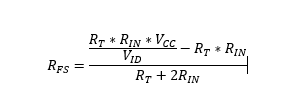Other Parts Discussed in Thread: SN65HVD1780-Q1
Hi, Staff
Q1:
If Vic of AM26C32 is 0V to 5V, will VIT+/- operate without problems if it is ±0.1V?
The datasheet says VIT+/- is ±0.2V when Vic is ±7V.
When calculating Fais-safe pull-up and pull-down resistors,
The resistance value differs depending on whether VIT+/- is ±0.1V or more or ±0.2V or more.
Which one should I use?
I understand that the pull-up and pull-down resistor values change depending on the Vic value of the application.
Q2:
8.2 EQUIPMENT OF A OR B INPUT
What is the % error between 17kΩ and 288kΩ inside the device?
best regards
cafain



